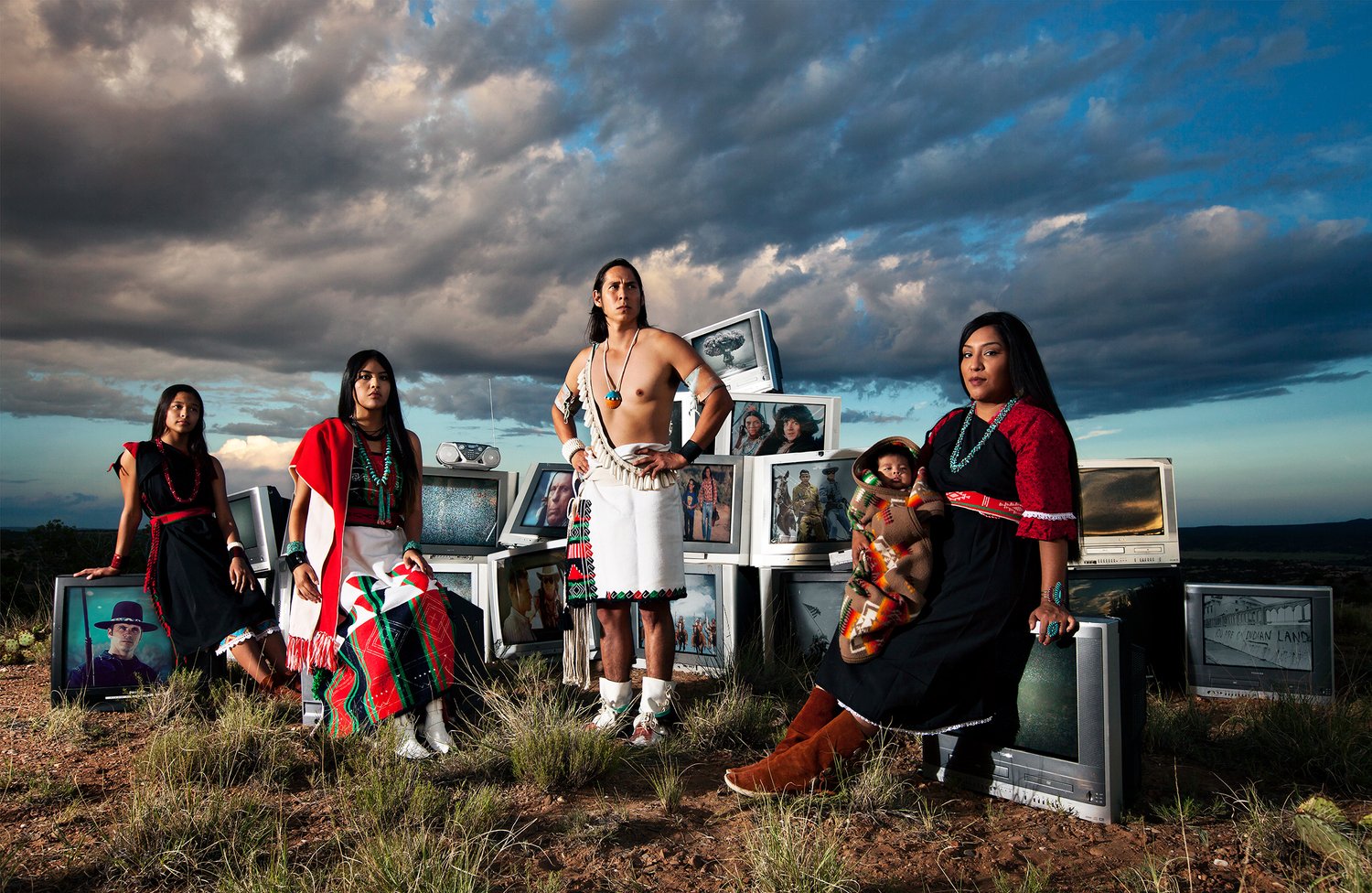
An enrolled citizen of the Chemehuevi Indian Tribe, Cara Romero is a contemporary artist creating photographs that speak to Native American identity. In a theatrical style, Romero’s photographs explore the history and representation of Native existence, counteracting the inaccurate and offensive portrayals common throughout academia and popular media.
To move the Scripps College collections toward greater inclusivity, the Ruth Chandler Williamson Gallery recently acquired three photographic works by Romero. Purchased in 2022 through the Gabrielle Jungels-Winkler Acquisition Fund, the works include Coyote Draws the Strings (2017), TV Indians (Color) (2017), and Winka & The Windmills (2019).
From Romero’s series Pop Culture & Our Indigeneity, TV Indians (Color) depicts Southwestern Indigenous Puebloan people gathered at New Mexico’s Galisteo Basin. Romero stages her Native subjects in front of forty recycled televisions, juxtaposing each person against displays of American media on the screens. Critiquing these portrayals of Native Americans, Romero references both historic events and images that have harmed Indigenous people and communities. These include a local health crisis resulting from mid-twentieth century atomic testing in New Mexico as well as stereotypes and caricatures such as Keep America Beautiful’s 1971 “Crying Indian” public service announcement, in which an American-Italian actor played a Native man as part of a message denouncing pollution.
TV Indians starts a conversation with elements of satire and allegory, asking the viewer to consider the ways in which colonialism has affected Indigenous people through displacement, violence, erasure—and even photography. The camera has long served as a weapon of colonization. It has aided the exploitation and dehumanization of marginalized groups across the globe; often reducing them to mere objects for consumption. With defiance and agency, Romero reclaims the camera, creating photographs that depict, as she expressed, “the world I wish people knew.”1 The Native theater that Romero has created through photography allows for a reimagining of past, present, and future Native narratives. Offering the space to portray a wide range of stories and identities, Romero aims to not treat Native peoples as a monolith, authorizing the lens to instead “create accurate, modern representation by and for Native Americans.”2
Cara Romero’s photographs in the Scripps College collections are accessible for viewing online or in person by appointment.
[1]Anne Wallentine, “‘The World I Wish People Knew’: Photographer Cara Romero on Redefining Contemporary Native Art,” Hyperallergic, January 13, 2023, https://hyperallergic.com/612795/cara-romero-ndn-radical-imagination-grant/.
[2]Ibid.
Written By Raylene B. Olalde CSULB ’24, Getty Marrow Collections Intern 2024.

